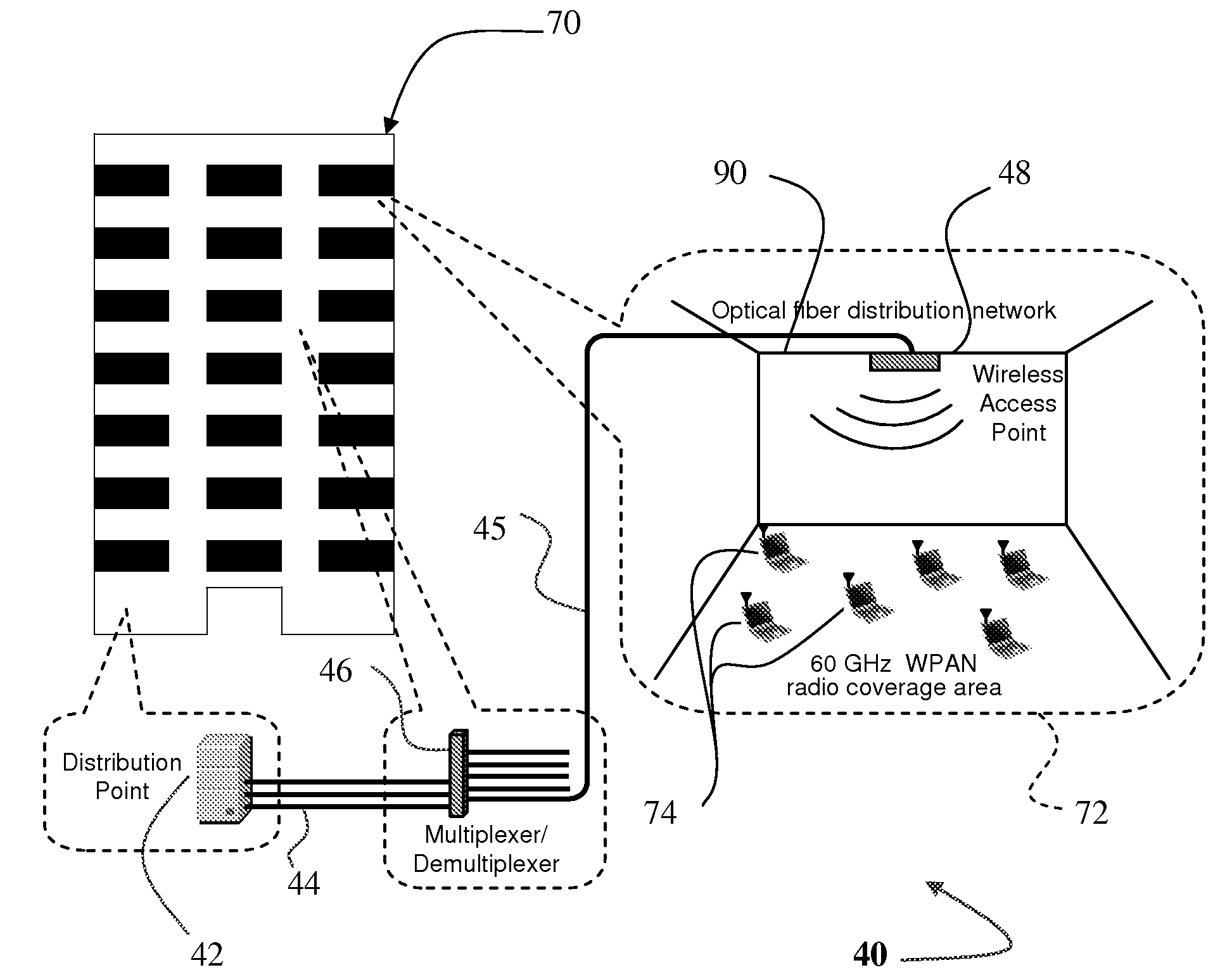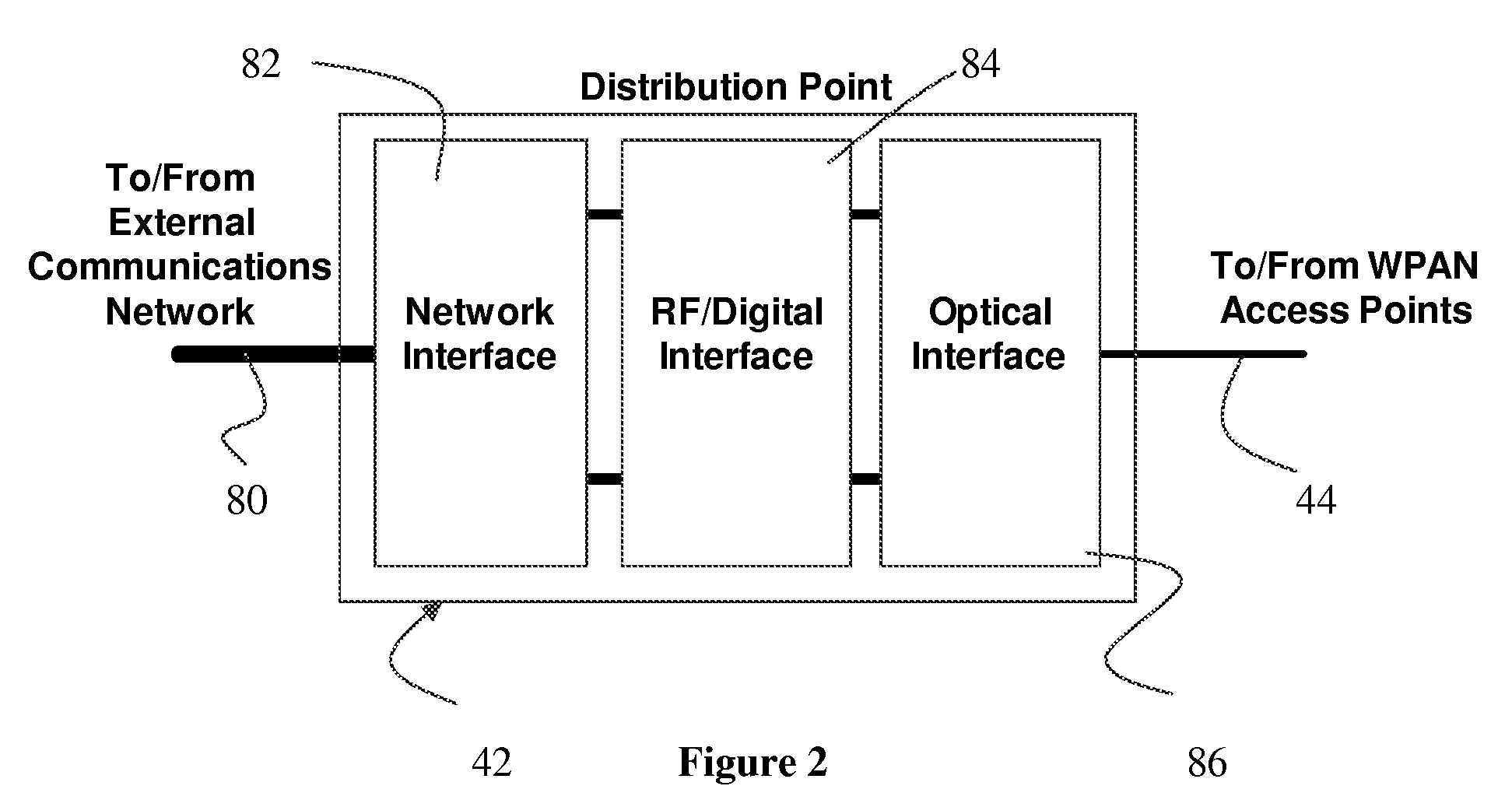Optical fiber distributed wireless personal area network
- Summary
- Abstract
- Description
- Claims
- Application Information
AI Technical Summary
Benefits of technology
Problems solved by technology
Method used
Image
Examples
Embodiment Construction
[0013]In the following description, reference is made to the accompanying drawings that form a part thereof, and in which are shown, by way of illustration, specific exemplary embodiments in which the invention may be practiced. These embodiments are described in sufficient detail to enable those skilled in the art to practice the invention and it is to be understood that other embodiments may be utilized and that changes may be made without departing from the scope of the invention. The following description is, therefore, not to be taken in a limiting sense.
[0014]FIG. 1 depicts a schematic diagram 40 of a fiber distributed 57-66 GHz Wireless Personal Area Network (WPAN), and more specifically, a 60 GHz WPAN infrastructure that illustrates an example of the invention. Shown in FIG. 1 is a fiber distributed WPAN that could support a number of multi-gigabit-per-second data applications and interconnected wireless access points, installed within a building 70. As shown in the diagram,...
PUM
 Login to View More
Login to View More Abstract
Description
Claims
Application Information
 Login to View More
Login to View More - R&D
- Intellectual Property
- Life Sciences
- Materials
- Tech Scout
- Unparalleled Data Quality
- Higher Quality Content
- 60% Fewer Hallucinations
Browse by: Latest US Patents, China's latest patents, Technical Efficacy Thesaurus, Application Domain, Technology Topic, Popular Technical Reports.
© 2025 PatSnap. All rights reserved.Legal|Privacy policy|Modern Slavery Act Transparency Statement|Sitemap|About US| Contact US: help@patsnap.com



